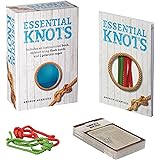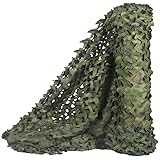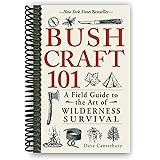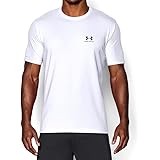Building a truly compact and effective personal survival kit is a constant challenge for outdoor enthusiasts and emergency preppers. Many pre-made kits are either too small to contain vital items or so bulky that they are often left behind when needed most. The key lies in selecting versatile gear that can address a wide range of emergency scenarios without adding excessive weight or volume.
As highlighted in the video above, a well-curated EDC (Everyday Carry) survival kit should prioritize the essential “rule of threes” for human survival. This fundamental principle reminds us of the critical timescales for staying alive in various conditions. Understanding these timeframes directly influences the selection of items within your compact survival kit.
Prioritizing Your Personal Survival Kit Essentials
The “survival rule of threes” dictates that a person can typically survive three minutes without air, three hours without shelter in extreme conditions, three days without water, and three weeks without food. This hierarchy profoundly influences which items must be included in any compact survival kit. Focusing on immediate threats like hypothermia or exposure should take precedence over long-term sustenance.
However, it is also important to consider the likelihood of different emergencies. Short-term survival situations, lasting a few hours to a few days, are far more common than prolonged wilderness scenarios. Therefore, your pocket survival kit should excel in addressing these more probable short-duration challenges. The selection of tools should reflect a balance between immediate life-saving functions and broader utility.
The Foundational Pouch: More Than Just Storage
The choice of pouch for your compact survival kit is far more critical than simply holding items together. It serves as the organizational backbone, ensuring quick access and protection for your gear. A robust and intelligently designed pouch, like the Maxpedition 5×3 pocket organizer or its reliable knockoffs, offers crucial features for accessibility.
These pouches typically feature a three-quarters zip, allowing them to open flat like a book, which exposes all contents simultaneously. Furthermore, external webbing systems such as MOLLE loops provide versatile attachment options, securing the kit to a backpack, belt, or even plate webbing. A mesh pocket on the exterior can also be used for quick-grab items, like a small map or emergency cash, which might need to be accessed separately from the main contents.
Shelter Solutions for Immediate Protection
Protection from the elements is paramount, especially considering the “three hours without shelter” rule in extreme weather. While a full tent is impractical for a compact survival kit, effective alternatives exist. The video emphasizes the importance of a Mylar space blanket, which is designed to reflect radiant heat back to the body, thereby reducing heat loss.
Despite their reflective properties, Mylar blankets are often insufficient on their own, especially in windy or wet conditions. They perform significantly better when combined with a plastic poncho, which provides an essential barrier against wind and rain. This combination creates a more robust, albeit temporary, shelter system. Expanding on this, a few tea light candles, as suggested, can generate a small but significant amount of heat within this improvised shelter, potentially making a cold night survivable by raising the ambient temperature slightly.
Igniting Hope: Fire Starting Essentials
Fire serves multiple critical functions in a survival situation: warmth, water purification, signaling, and psychological comfort. Therefore, reliable fire-starting tools are non-negotiable for any personal survival kit. A ferrocerium rod, often called a fire steel, is highly dependable; it produces intense sparks regardless of wet conditions or altitude, making it a favorite among survivalists.
However, redundancy is a core tenet of preparedness. Including a simple Bic lighter provides a quick and effortless flame source, especially useful for less strenuous situations. For challenging weather, specialized tinder, such as a Hammerhead fire card or similar prepared tinder, dramatically improves the chances of success. These materials are designed to catch a spark even when damp, providing a critical advantage when natural tinder is scarce or wet.
The Versatility of Cutting Tools: Your Swiss Army Companion
A multi-purpose cutting tool is indispensable, and a quality Swiss Army Knife, such as the Victorinox Tinker model, stands out for its compact utility. While not a heavy-duty bushcraft knife, its array of functions addresses numerous common survival tasks. The Tinker typically includes two sharp blades, a large and a small, crafted from durable steel capable of holding a good edge.
Beyond the blades, the integrated saw, despite its small size, is surprisingly effective for cutting through small branches, plastics, or other craft materials. The bottle and tin openers are remarkably efficient, even superior to many dedicated kitchen tools, demonstrating Swiss Army Knife engineering. Furthermore, the various screwdrivers (flathead, Phillips head), awl, pin, tweezers, and toothpick offer solutions for repairs, first aid (like splinter removal or tick extraction), hole-punching, or even basic hygiene. This comprehensive yet compact tool embodies the principle of maximizing utility in minimal space.
Ensuring Hydration: Water Purification on the Go
Access to safe drinking water is critical, as dehydration can severely impair judgment and physical ability within days. Your compact survival kit must include robust water purification methods. Portable water bags, such as the three 1-liter Wazoo Survival Gear bags mentioned, provide a crucial means to collect and store water from various sources.
In conjunction with storage, purification tablets are a lightweight and effective solution. The inclusion of ten 1-liter Oasis water purification tablets, for example, allows for the treatment of ten liters of water, sufficient for several days in a short-term emergency. It is generally advised to carry enough purification capacity for at least three days’ worth of water per person, which often means having 6-9 liters of purified water readily available or the means to produce it quickly. Regular replacement of tablets to ensure their potency is also a vital aspect of kit maintenance.
Illuminating Darkness: Emergency Lighting Options
Effective lighting is essential for navigation, signaling, and performing tasks in low-light conditions. Carrying redundant light sources is a prudent strategy, reflecting the “two is one, one is none” survivalist adage. A larger, more powerful torch or flashlight can be invaluable for navigating unfamiliar terrain or signaling over greater distances.
Conversely, a smaller, highly compact light can be ideal for close-up work, such as map reading or searching inside a pack, as it can be held in the mouth, leaving hands free. Storing batteries reversed prevents accidental activation and drainage, ensuring your lights are ready when needed. Modern LED torches offer impressive lumen output and extended battery life in increasingly smaller packages.
Signaling and Navigation for Rescue and Direction
Getting found and staying oriented are crucial elements of survival. Your personal survival kit should contain tools for both. A reliable compass, even a small button compass like the Polimath Products mini glow compass, is fundamental for navigation. High-quality button compasses are liquid-filled, providing stability and accuracy, unlike cheaper, less reliable versions.
For signaling, an emergency whistle offers a loud, distinct sound that travels further than the human voice, conserving energy. A reflective signal mirror is equally effective for visual signaling during daylight hours. This simple plastic mirror can reflect sunlight many miles towards a potential rescuer, providing a powerful passive signaling option. Mastering the use of these tools through practice significantly enhances their effectiveness in a real emergency.
The All-Purpose Fixer: Duct Tape Utility
Duct tape, often referred to as gaffer tape, holds an almost mythical status in preparedness circles for good reason. Its versatility is nearly unmatched, making it a must-have in any compact survival kit. Wrapped around a small card to save space, several meters of this strong adhesive tape can facilitate countless repairs, from patching torn gear to temporarily mending a tent or boot.
Furthermore, duct tape has surprising applications in first aid; while not antiseptic, it can be used to hold dressings in place or even create an improvised splint. Some survivalists also consider it a flammable aid for fire starting, using small pieces as tinder. Its ability to “hold everything together” makes it an invaluable, multi-functional material for improvising solutions in diverse emergency situations.
Beyond the Basics: Sustenance and Additional Enhancements
While food is not an immediate priority according to the “rule of threes” (a healthy human can survive three weeks or more without food), having the means to procure it can boost morale and energy. A compact fishing kit, complete with monofilament line (such as 6-pound test), various size 14 hooks, split shot weights, floats (even improvised from earplugs), and float stops, provides a basic sustenance option. This kit, though small, can be used to craft an emergency fishing rod from natural materials or simply as a hand line.
However, it is vital to acknowledge that fishing requires time and skill, which may not be available in an urgent situation. Therefore, complementing this with high-calorie emergency food, such as glucose tablets or even a chocolate bar, offers immediate energy. Adding a few meters of 550 paracord also dramatically expands the kit’s utility. Paracord is incredibly strong and can be broken down into seven inner strands, which serve as fishing line, snares, dental floss, or robust lashing material. Thoughtful additions like these truly complete a robust and adaptable compact survival kit.
Pocket-Sized Survival: Your Questions Answered
What is an EDC (Everyday Carry) survival kit?
An EDC (Everyday Carry) survival kit is a small, compact emergency kit designed to be carried with you daily. It contains essential gear to help you address a range of immediate survival scenarios.
Why is it important to have a compact survival kit?
A compact survival kit ensures you have vital items readily available to address unexpected emergencies, helping you be prepared without carrying bulky gear. It’s designed for short-term situations that are more common.
What is the “survival rule of threes”?
The “survival rule of threes” states that a person can typically survive three minutes without air, three hours without shelter in extreme conditions, three days without water, and three weeks without food.
What are the most important types of items to include in a basic survival kit?
Based on the “rule of threes,” you should prioritize items for immediate threats like shelter, fire starting, and water purification. These address critical needs for warmth, protection, and hydration.











